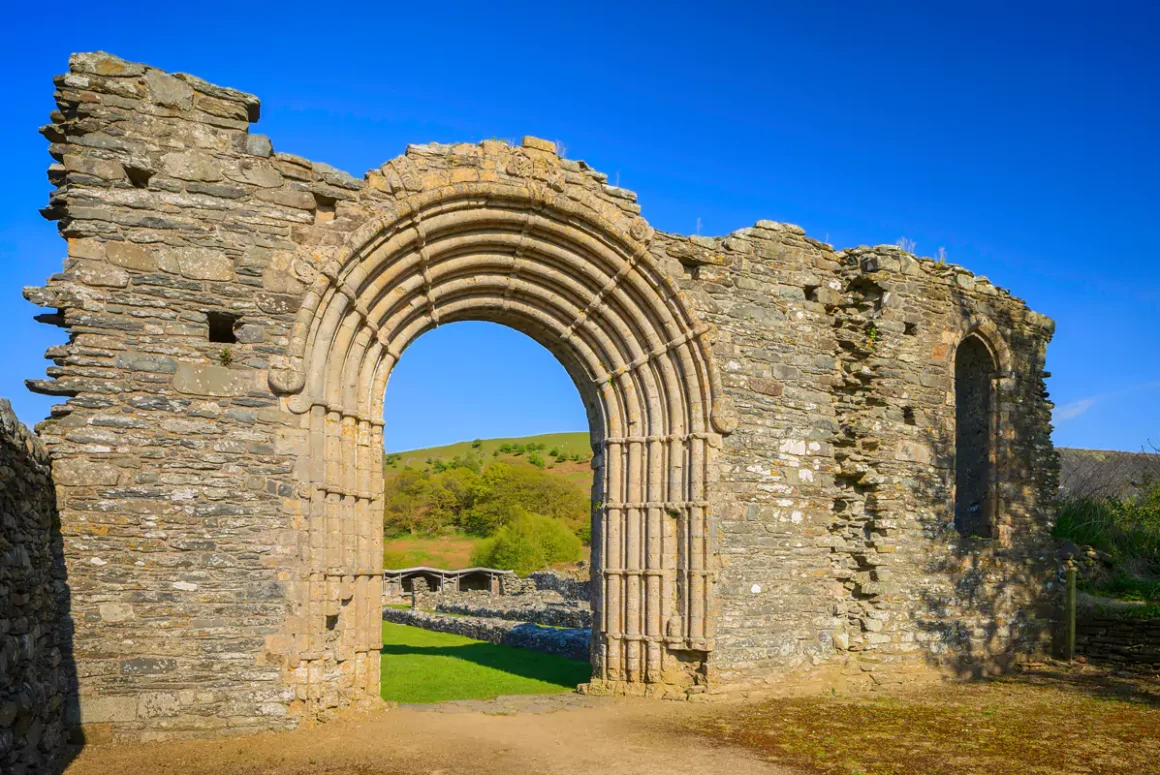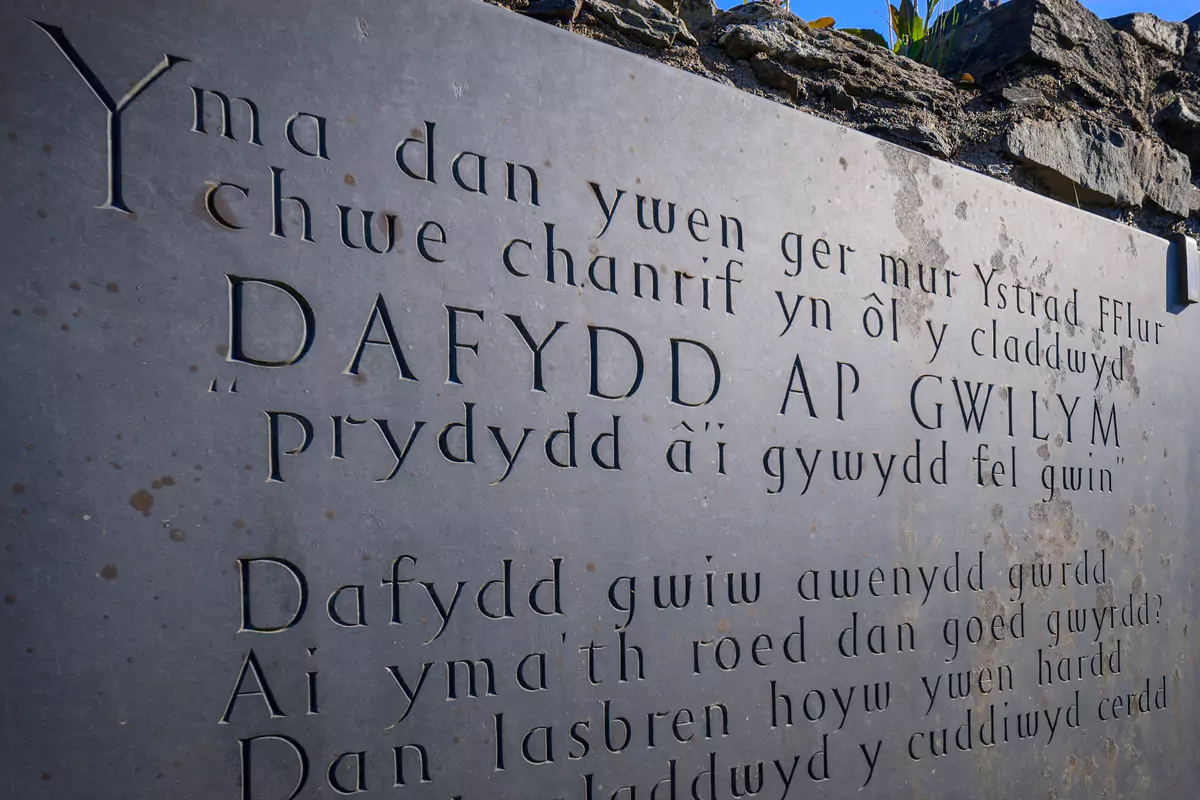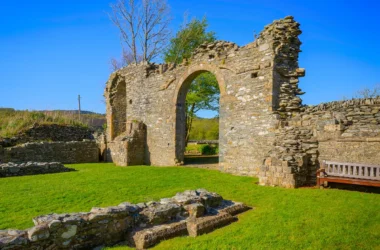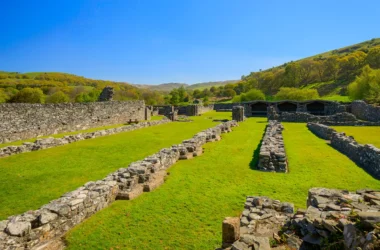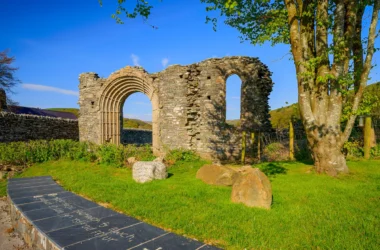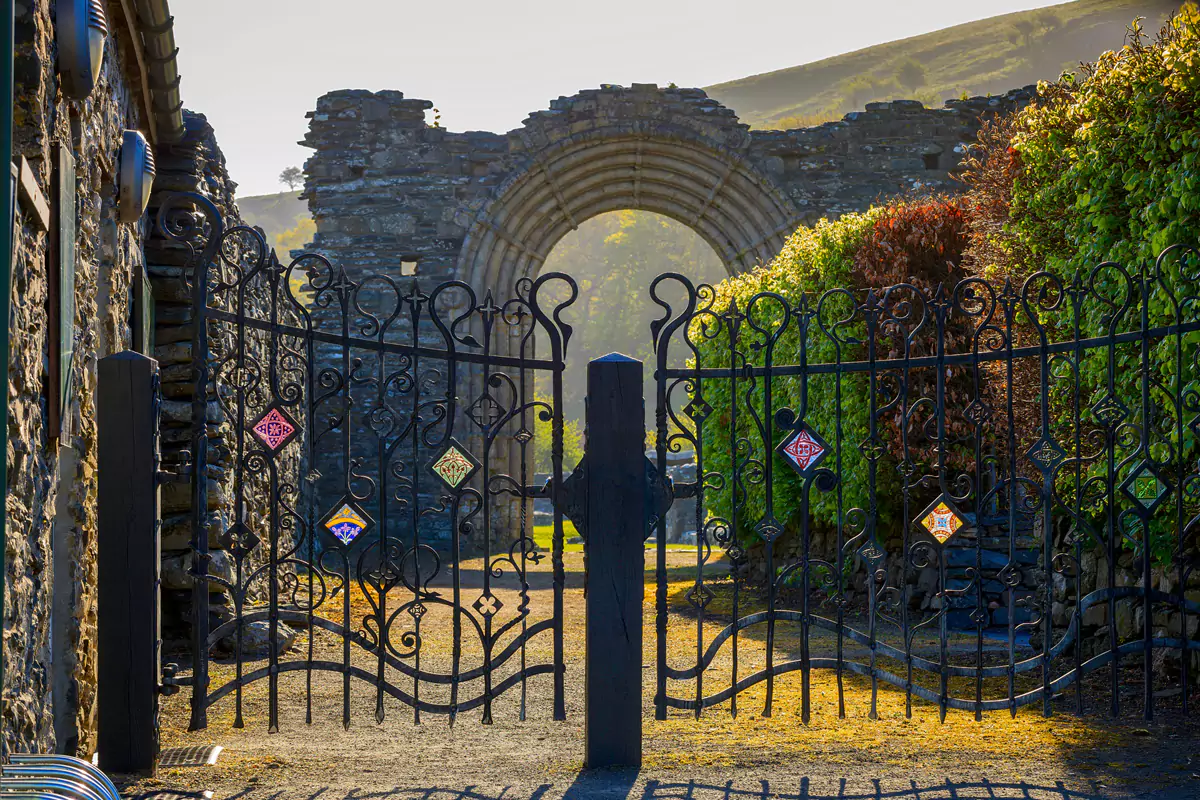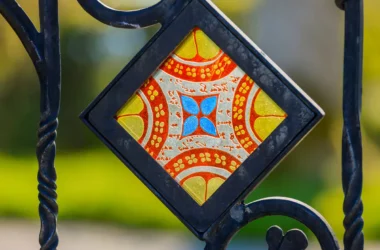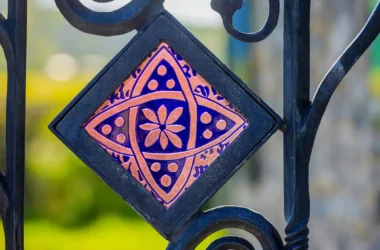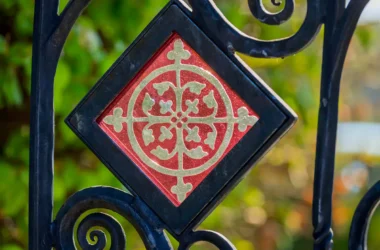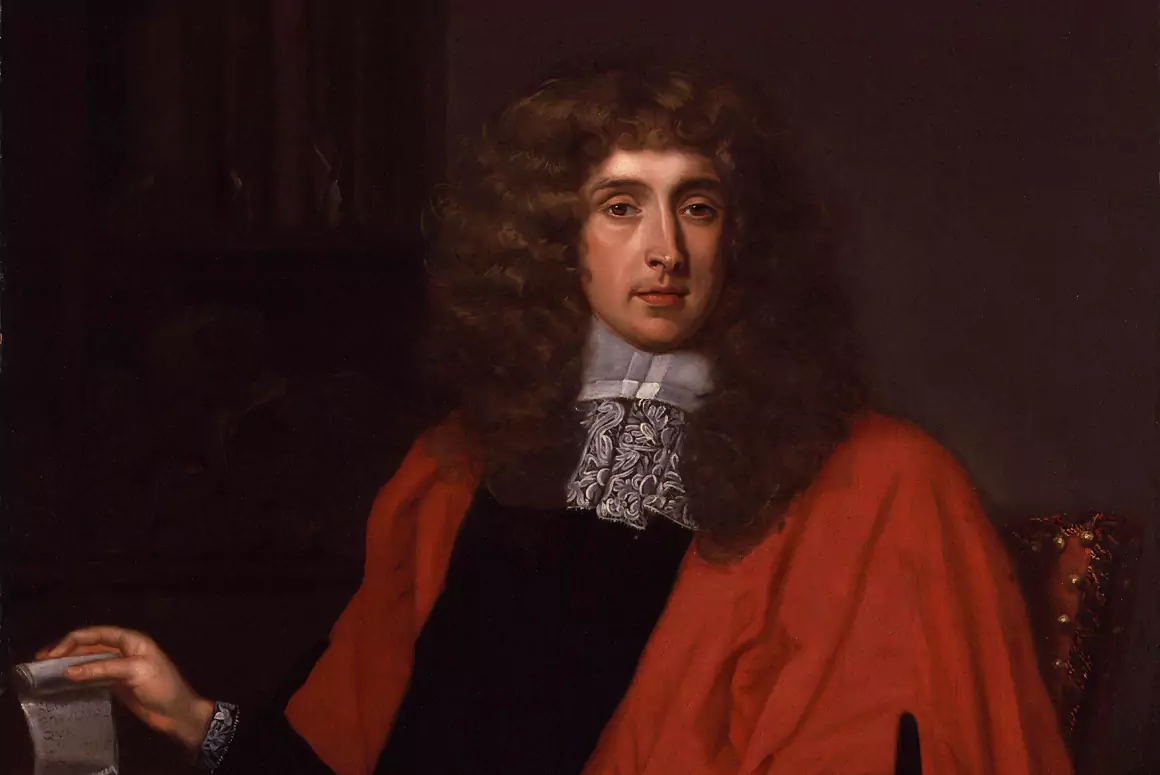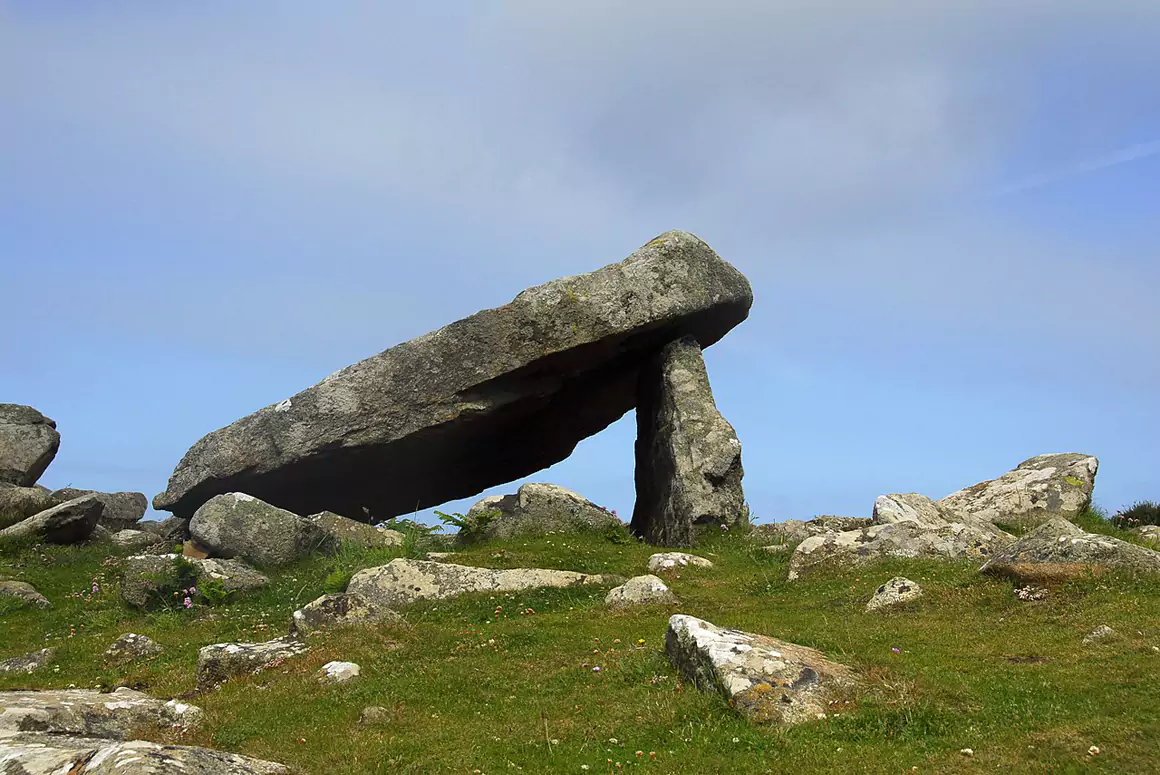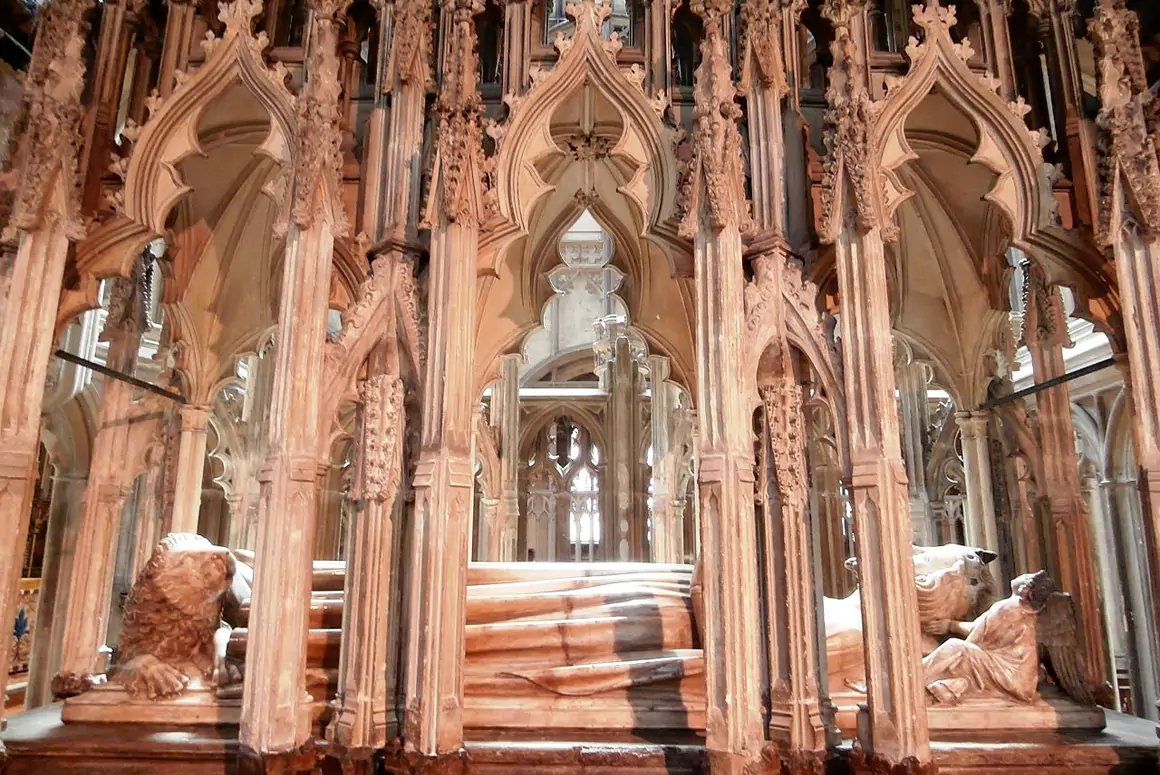![]()
When the white-robed Cistercian monks of Whitland, Carmarthenshire, decided to spread their wings and establish a monastery in the wilds of the Cambrian Mountains little did they know it was destined to become one of the most powerful and culturally influential centres in medieval Wales. In 1164 – on the banks of the Afon Fflur at Pontrhydyfendigaid near Tregaron – they began their labour of devotion and the cornerstones of the mighty Strata Florida Abbey were laid.
The land was generously provided by Robert Fitzstephen – the Norman Lord of Pennard – and the monks got quietly on with their chosen lifestyle of rural simplicity. This continued until 1166 when the Prince of South Wales – Rhys ap Gruffydd – went on the rampage conquering Norman holdings in Ceredigion and pretty well taking complete control of the area. These irritating and troublesome claims to his ancestral homelands were causing a bit of a headache for Henry 11 – so to save face he appointed Rhys as Justice of South Wales which conveniently gave him the rights to the land he’d already nabbed.
Meantime the Cistercians had been silently beavering away building themselves a profitable little empire including a magnificent flock of sheep. Rhys was no fool and knew a good thing when he saw it so happily took the monastery on board – even snatching a bit of the glory by allowing himself to be regarded as the founder of Strata Florida.
The monks went from strength to strength with the support of Rhys who granted them the use of extensive estates in the surrounding rich pastures – their huge flocks thrived and the money rolled in putting the Abbey well and truly on the map. In 1184 the building of a new church began at its present site – construction was to take an incredible fifty years but was to be the largest in Wales befitting Strata Florida’s newfound status. These modest monks were not only accomplished sheep farmers but exceptionally well educated so the Abbey became renowned as a centre for Welsh scholarship. The Welsh annals known as Brut y Tywysogion – Chronicle of the Princes – are believed to have been compiled there.
They record the strong association between the abbey and the princely Dinefwr family’s house of Deheubarth who became patrons of the abbey. Many family members were interred there.
Strata Florida was not immune from the ravages of war or even act of God – it was badly damaged by a lightning strike in 1285. Prior to that in 1212 King John had threatened to destroy the abbey convinced it was a “haven for our enemies”. Fortunately for the monks troubles elsewhere diverted his attentions. But it was in for a battering when it got caught in the crossfire of the Welsh-English wars between 1276 and 1283. Then in 1294 it was almost obliterated when the English army set fire to it apparently on the orders of King Edward – he denied having any part in it. The tenacious monks hung on to what was left of their beloved abbey but it was to enter a period of gradual decline.
In 1401 the abbey suffered yet another crushing blow. Owain Glyndwr’s war of independence was in full swing and King Henry IV was doing his level best to ensure it didn’t go Owain’s way. The King made Strata Florida the base for his military campaign after kicking the monks out and plundering the abbey in retribution for their suspected allegiance to Glyndwr’s aspirations for an independent Wales.
Despite all of these setbacks the monks managed to keep the abbey ticking over until – in 1536 – the dissolution of the monasteries hit the headlines. Armed with his newly acquired Act of Supremacy Henry VIII and his project manager – Oliver Cromwell – set about shutting down and selling off every friary and nunnery in the land. So come the February of 1539 the final whistle was blown for Strata Florida and the remaining Cistercian monks reluctantly had to call it a day.
The lands were distributed amongst the local well-to-do gentry – the monk’s dormitories and refectory were converted to a manor house. Sadly the church rapidly fell into ruin after opportunistic builders helped themselves to its rather attractive and valuable stone. Most of the abbey’s contents were looted after the monks had rescued whatever they could but there was one relic the pillagers failed to get their hands on – the fabled Holy Grail. Legend has it that a group of monks – fleeing from a dissolved Glastonbury Abbey – brought the wooden chalice to Strata Florida for safekeeping but when Henry’s men arrived it was whisked away to the cellars beneath nearby Nanteos Mansion. It remained safely hidden there until the house was rebuilt in 1739. The Nanteos Cup was then put on display in a glass cabinet for pilgrims to experience its reputed healing powers. It has been the subject of much speculation along with examination by specialists who concluded that it dated from the late middle ages and was carved from wych elm. After being passed from pillar to post – even stolen at one point – it’s now in the care of the National Library of Wales where it is on permanent public display.
Despite the ruinous state of the abbey this delightfully tranquil valley still holds the same enchantment today that captivated the monks when they first stumbled upon it. The sense of history is almost palpable – it’s not difficult to imagine the flourishing Strata Florida in its heyday along with the many violent buffetings it sustained from its waring neighbours. The surrounding hillside still peppered with sheep peacefully grazing – an echo of the humble monks magnificent achievement all those years ago.


